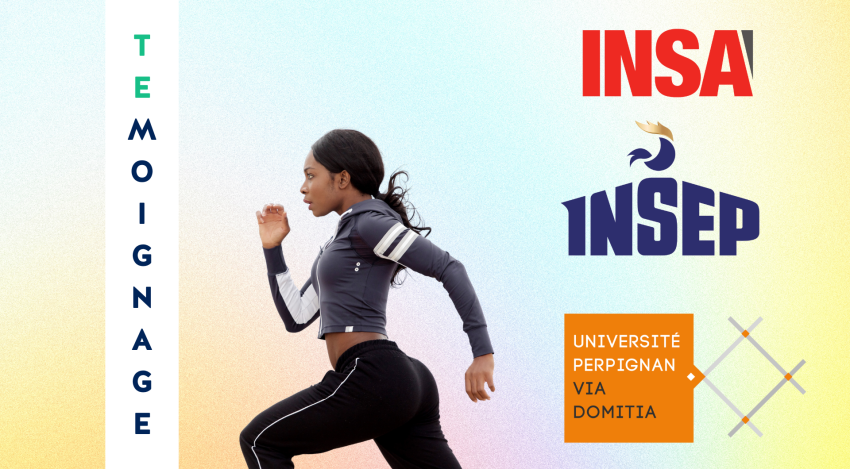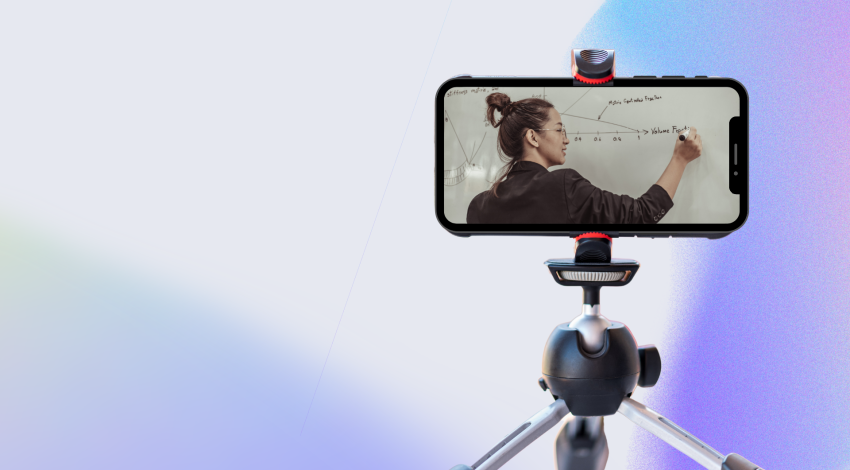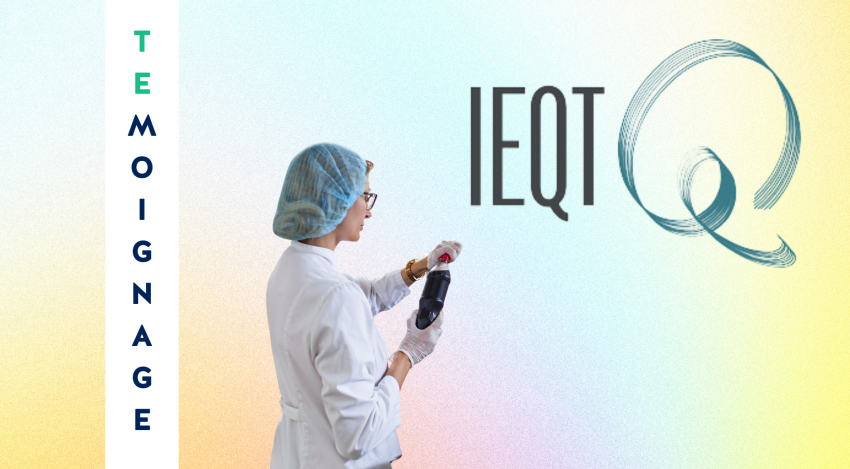

Becoming a high-level athlete requires a rigorous and daily training regimen that's difficult to balance with higher education studies. Training for these athletes is estimated to take between 15 to over 30 hours per week, alongside numerous travel commitments. On average, a university bachelor's degree includes around 20 hours of classes per week, not accounting for personal study time, which greatly varies based on fields of study.
Nevertheless, building this dual socio-professional project is crucial for them. Athletic careers often conclude early. The professional transition of athletes is in part determined by the studies they undertake.
In recent years, inclusive policies in higher education have aimed to improve the success rates of underrepresented groups. In this article, we focus on the case of high-level athletes, but inclusion also concerns artists, employed students, as well as individuals with disabilities or illnesses.
In this article, we intend to review various technopedagogical approaches and specific support mechanisms that allow these students to have equal chances of success as others.
At the University of Perpignan, a Student Office for Specific Pedagogical Needs was established in 2019 to support various underrepresented student groups in continuing their university studies. Within this office, an administrative manager oversees 81 student athletes, including 34 High-Level Athletes (HLA). High-level artists (musicians, dancers, etc.) and individuals with disabilities also receive support.
INSA* Lyon, on the other hand, established a high-level sports section in 1981. Hervé Bizzotto, the director of this section, explains that from the inception of the school, its founders aimed to develop values of humanist engineers, with personal projects outside of science. Even today, 30% of the curriculum is non-scientific. Physical activity is mandatory for all students, requiring 1.5 hours per week. This progressive policy has made this engineering school one of the first to offer tailored programs for over 40 years.
Finally, the INSEP* hosts the top French athletes. There, young individuals engage in intensive sports training in hopes of qualifying for the Olympics. However, it's strongly recommended for these young athletes to continue their studies concurrently. Upon admission, they are supported by a dedicated mentor to identify the most suitable education path for their aspirations. Over the years, INSEP has established numerous partnerships with schools and universities to offer athletes a wide range of career options.
Customized pathways, schedule adjustments, specialized status, and personalized tutoring—let's review the various accommodations put in place in these three institutions.
*National Institute of Applied Sciences
*National Institute of Sport, Expertise, and Performance
A High-Level Sports Commission convenes twice a year to review the applications of athletes. In theory, all courses are available. In practice, some disciplines remain incompatible due to practical activities and travel that can't be made up remotely. Once their application is accepted, students receive athlete status and are eligible for various accommodations.
Student athletes have the option, in agreement with the academic coordinator of their program, to switch tutorial groups and request attendance exemptions for classes.
A dedicated online platform has been set up. On this platform, all classes are transcribed and accessible anywhere, anytime. One student from each program is even remunerated by the university as a tutor to take notes and share them with all the disadvantaged students in their cohort. The university allows them to catch up on missed content asynchronously.
To support athletes, teacher tutoring is also available. Last year, around 60 hours were funded. Some instructors also share pedagogical videos and other resources to explain certain concepts.
Lastly, special substitution exam sessions are organized, and the duration of the program can be extended. To achieve this, athletes distribute subjects over multiple years, allowing them more time for training. This way, they can balance their sporting commitments with their studies.
The success rate of these student athletes reaches 60%. The accommodations provided by the university are appreciated by those who benefit from them, as confirmed by the annual satisfaction survey.

Today, INSA Lyon's high-level sports section hosts 180 students, including 70 who are officially recognized as High-Level Athletes. 98% of students who complete the first year graduate within this dual program.
These remarkable results are made possible through tailored adjustments offered by the school. The preparatory class is spread over 3 or 4 years instead of the usual 2. The diploma continuation can also be extended to 4 or 5 years, instead of 3. Students have approximately 24 hours of in-person classes per week instead of the standard 32 hours in the traditional curriculum. Athletes follow exactly the same courses with the same total hourly volume as non-athletes. Time is simply adjusted to accommodate their commitments.
As with any professional athlete, students sometimes miss classes or exams due to sports commitments. Every effort is made to help them make up for these.
For course follow-up, over 400 hours of tutoring are provided by senior students and 200 hours by teachers, sometimes in small groups. Since this year, and due to Covid-19, certain courses are recorded and shared on the institution's internal platform. While currently a pilot initiative, it's planned to be extended to multiple courses as necessary. Videos can be viewed and reviewed, a feature highly appreciated by students, especially those who travel frequently.
For exams, INSA's administration collaborates with club coaches, who are also deeply involved in the dual project. Exams can be taken remotely under the supervision of federation representatives, ensuring fairness and consistency. If remote exams are not feasible, makeup sessions can be organized.
Agreements are signed with various professionals such as nutritionists, osteopaths, sports psychologists, and physiotherapists. Around 50 students benefit from these services every year; others are usually directly supported by professionals within their clubs.
Finally, the campus provides dedicated facilities. A gym is accessible at all times, and catering services are available in the evenings after training. There's also a residence with apartments for athletes.

Marie Le Menn manages the STAPS (Sciences and Techniques of Physical and Sports Activities) bachelor's program, overseen by the University Paris Est Créteil. This degree is the only one directly offered on the INSEP campus. This arrangement allows students to alternate between classes and training throughout the week, without commuting.
Classes are held from 8 am to 9:30 am and then from 2 pm to 3:30 pm every day. The rest of the time is dedicated to their sports practice. While their schedules are adapted, they receive the same education as non-athlete students.
Everything is designed to ensure their success. Schedules, exam sessions, and of course, a platform to catch up on missed classes are provided. With class sizes reduced to 17 to 30 students per year, each student receives personalized support. The success rate for this program significantly surpasses the national average, with a 67% success rate in L1 (first year) last year.
If a student's grades drop, Madame Le Menn will remind them of the different ways they can improve. A volunteer in civic service also assists these students in organizing their dual project. Their role is to ensure the student has all the necessary resources and tools to catch up on anything missed.
With 25 to 40 hours per week dedicated to sports, some students occasionally lose sight of their academic commitment. The challenge for Madame Le Menn and the socio-professional support mentors is to motivate the least engaged students—the ones who won't ask for help or might struggle with exams.
Finally, a part-time teacher offers tutoring, either individually or in small groups. They have multidisciplinary skills, allowing them to assist students in various subjects. All other instructors are also involved. They make themselves available to help students returning after a long absence and provide a wealth of online resources.
Each surveyed institution caters to different audiences. While they all face clear challenges related to time and attendance, they don't all benefit from the same accommodations. The motivation of the student themselves also plays a role. INSA educates students who all received high honors in the baccalaureate. These are methodical students with a strong desire to excel both academically and athletically. Conversely, the University of Perpignan and the STAPS (Sports Science) program at INSEP (National Institute of Sport, Expertise, and Performance) accommodate different student profiles, some more engaged than others. While some are diligent, others need to be pushed forward.
After the Covid crisis, some courses at INSEP continued to be offered online. Upon analyzing viewing rates, this practice was abandoned since these courses were rarely revisited. Adding viewing hours to catch up on missed material is time-consuming, especially given their already demanding schedule. At INSA, the opposite phenomenon occurs. When a course is posted online, teachers realize, through questioning, that the material has been caught up and assimilated from week to week. While video dissemination of a course is very effective at INSA, it's less so for the STAPS program at INSEP.
However, there are similarities across all institutions. Spreading out curricula over several years is almost mandatory. High-level athletes, in fact, have a status that governs their university rights. Training must align with classes and exams. Subsequently, every effort must be made to catch up on missed classes.
Lastly, tutoring takes various forms: note-taking, private lessons with teachers or other students. All institutions also have an e-learning platform, with varying degrees of distance resources available.
In recent years, it's clear that accommodations for disadvantaged audiences have significantly improved. While some institutions embraced this approach from their inception, others have recently joined this trend to align with the policy of overall inclusion.
The involvement of all universities is now evident, as highlighted during the recent conference "Disadvantaged Audiences: Tailored Accessibility for All," which concluded with Mireille Brangé's statement: "In 20 years, the university will be inclusive or it won't be." Over 60 contributions were presented, many of which related to sports.
However, it's important to note that tailored solutions come at a cost. Offering customized curricula requires significant investment from the government and institutions. To be viable, customization cannot devolve into private tutoring, and tutoring hours are often limited.
Online learning platforms enable the sharing of almost all training content, allowing disadvantaged students to progress at their own pace. The Ministry of Higher Education and Research understands this and has funded 34 hybridization projects over the past two years. Furthermore, the national pooling of courses is another emerging idea, with projects like SHIFT, which aims to share online STAPS degree paths to make them accessible to all.
Could digital technology be the key to inclusive education in the future? It's a story that remains to be told.

